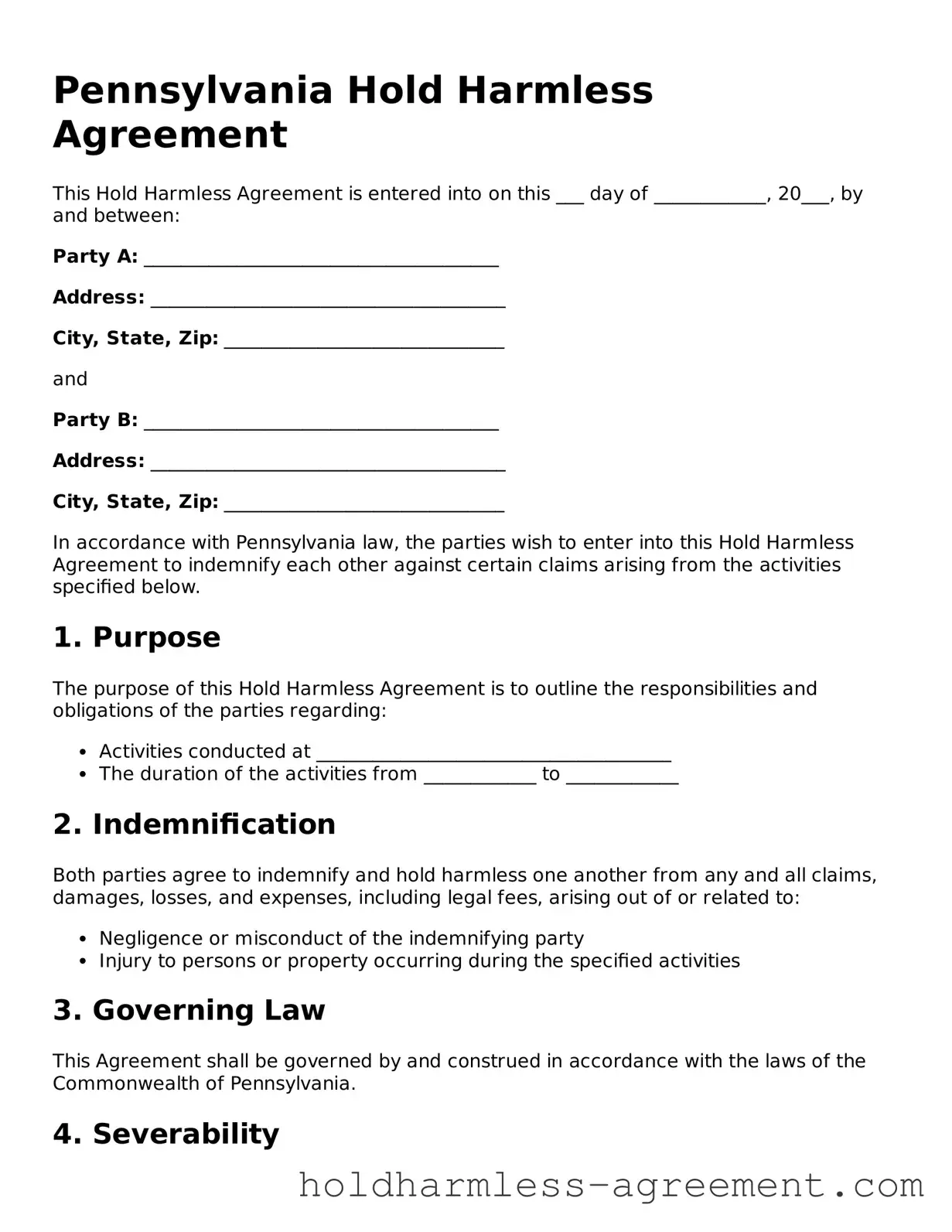What is a Hold Harmless Agreement in Pennsylvania?
A Hold Harmless Agreement is a legal document designed to protect one party from liability for any damages or injuries that may occur during a specific activity or event. In Pennsylvania, this agreement is often used in various contexts, such as rental agreements, construction projects, or events where one party may be exposed to risks. By signing this agreement, the party agrees to assume the risks and release the other party from any claims that may arise.
Who typically uses a Hold Harmless Agreement?
Hold Harmless Agreements are commonly used by:
-
Property owners renting out their space
-
Contractors working on construction projects
-
Event organizers hosting public or private events
-
Businesses providing services that involve some level of risk
Essentially, anyone who wants to mitigate liability in a potentially risky situation may find this agreement beneficial.
What are the key components of a Hold Harmless Agreement?
A well-drafted Hold Harmless Agreement typically includes the following components:
-
Parties Involved:
Clearly identify the parties entering into the agreement.
-
Scope of Activity:
Describe the specific activity or event that the agreement covers.
-
Liability Waiver:
Include a statement that releases one party from liability for damages or injuries.
-
Indemnification Clause:
Outline the responsibilities of each party in case of a claim or lawsuit.
-
Governing Law:
Specify that Pennsylvania law governs the agreement.
Is a Hold Harmless Agreement legally binding?
Yes, a Hold Harmless Agreement can be legally binding, provided it meets certain criteria. For it to be enforceable, the agreement must be clear, specific, and voluntarily signed by all parties involved. It’s important that all parties understand the terms and implications of the agreement before signing.
Can I modify a Hold Harmless Agreement?
Absolutely! A Hold Harmless Agreement can be modified to better suit the needs of the parties involved. However, any changes should be made in writing, and all parties must agree to the modifications. It’s advisable to consult with a legal professional if you are unsure about how to properly amend the agreement.
What happens if someone is injured despite the Hold Harmless Agreement?
Even with a Hold Harmless Agreement in place, there may be situations where a party can still be held liable for injuries. For example, if negligence can be proven, the agreement may not protect the responsible party. Courts may also refuse to enforce the agreement if it is found to be overly broad or unfair. It’s crucial to understand that while the agreement provides some protection, it does not eliminate all liability.
Do I need a lawyer to create a Hold Harmless Agreement?
While you don’t necessarily need a lawyer to create a Hold Harmless Agreement, it’s highly recommended. A legal professional can help ensure that the agreement is properly drafted, covers all necessary elements, and complies with Pennsylvania law. This can provide peace of mind and protect your interests in the event of a dispute.
